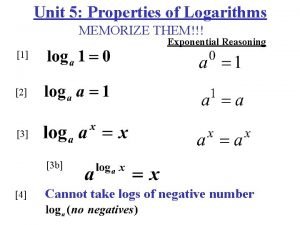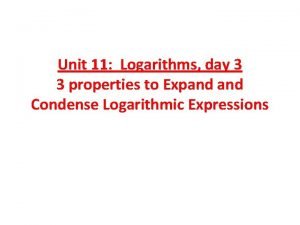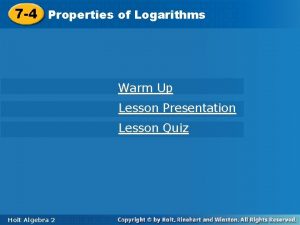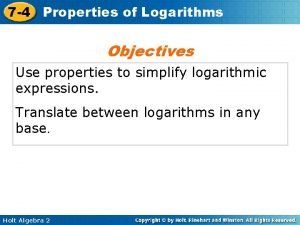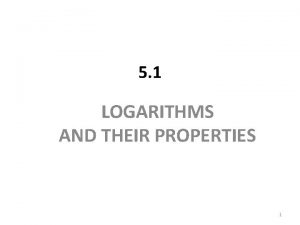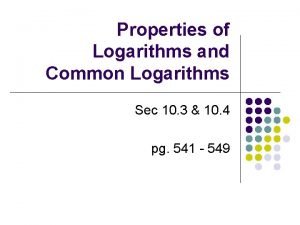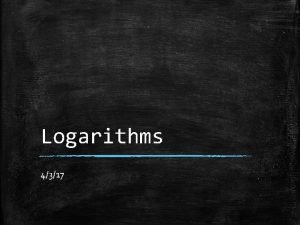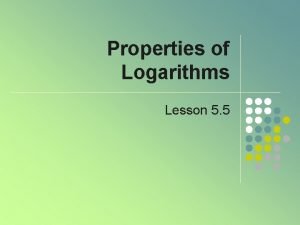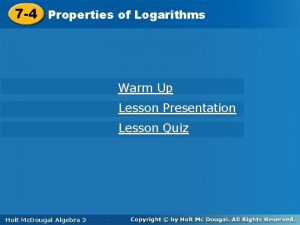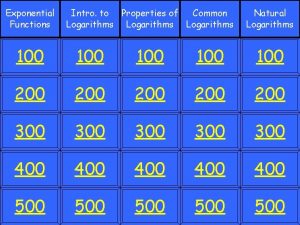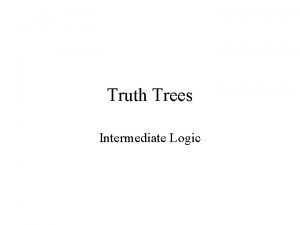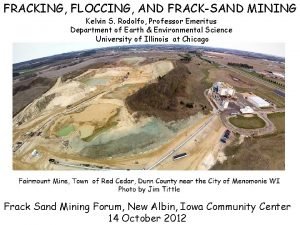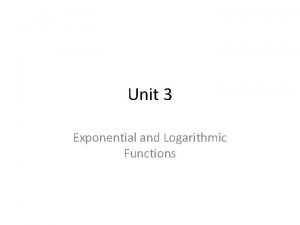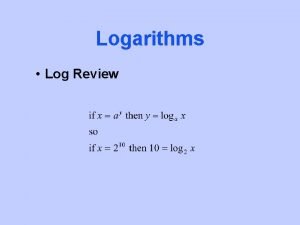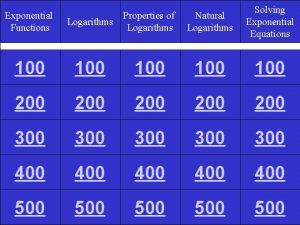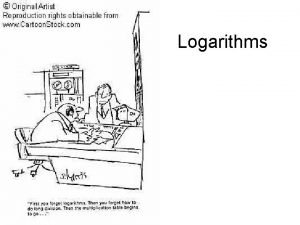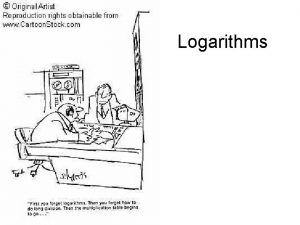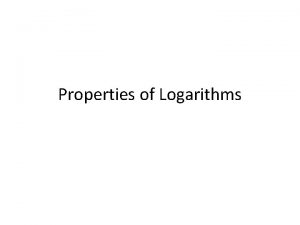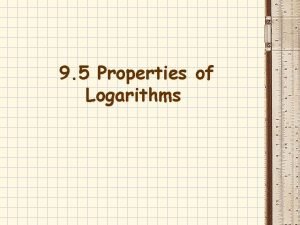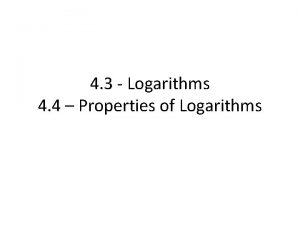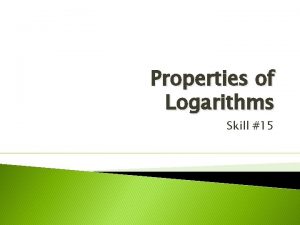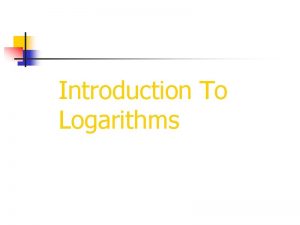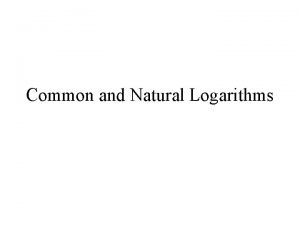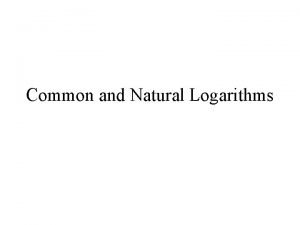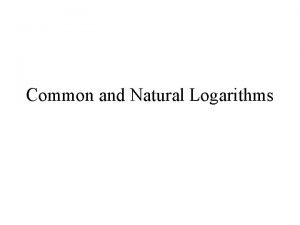Properties of Logarithms Rules of Logarithms If M















- Slides: 15

Properties of Logarithms

Rules of Logarithms If M and N are positive real numbers and b is ≠ 1: § The Product Rule: § logb. MN = logb. M + logb. N (The logarithm of a product is the sum of the logarithms) § Example: log 4(7 • 9) = log 47 + log 49 § Example: log (10 x) = log 10 + log x

Rules of Logarithms If M and N are positive real numbers and b ≠ 1: § The Product Rule: § logb. MN = logb. M + logb. N (The logarithm of a product is the sum of the logarithms) § § Example: log 4(7 • 9) = log 47 + log 49 Example: log (10 x) = log 10 + log x You do: log 8(13 • 9) = log 813 + log 89 You do: log 7(1000 x) = log 71000 + log 7 x

Rules of Logarithms If M and N are positive real numbers and b ≠ 1: § The Quotient Rule (The logarithm of a quotient is the difference of the logs) § Example:

Rules of Logarithms If M and N are positive real numbers and b ≠ 1: § The Quotient Rule (The logarithm of a quotient is the difference of the logs) § Example: § You do:

Rules of Logarithms If M and N are positive real numbers, b ≠ 1, and p is any real number: § The Power Rule: § logb. Mp = p logb. M (The log of a number with an exponent is the product of the exponent and the log of that number) § § Example: log x 2 = 2 log x Example: ln 74 = 4 ln 7 You do: log 359 = 9 log 35 Challenge:

Prerequisite to Solving Equations with Logarithms § § § Simplifying Expanding Condensing

Simplifying (using Properties) § log 94 + log 96 = log 9(4 • 6) = log 924 § log 146 = 6 log 14 § § § You try: log 1636 - log 1612 = log 163 log 316 + log 24 = Impossible! log 45 - 2 log 3 = log 5

Using Properties to Expand Logarithmic Expressions § Expand: Use exponential notation Use the product rule Use the power rule

Expanding

Condensing § Condense: Product Rule Power Rule Quotient Rule

Condensing § Condense:

Bases § Everything we do is in Base 10. § We count by 10’s then start over. We change our numbering every 10 units. § In the past, other bases were used. § In base 5, for example, we count by 5’s and change our numbering every 5 units. § We don’t really use other bases anymore, but since logs are often written in other bases, we must change to base 10 in order to use our calculators.

Change of Base § Examine the following problems: § log 464 = x § we know that x = 3 because 43 = 64, and the base of this logarithm is 4 § log 100 = x – If no base is written, it is assumed to be base 10 § We know that x = 2 because 102 = 100 § But because calculators are written in base 10, we must change the base to base 10 in order to use them.

Change of Base Formula § Example log 58 = § This is also how you graph in another base. Enter y 1=log(8)/log(5). Remember, you don’t have to enter the base when you’re in base 10!
 Rules of logarithms
Rules of logarithms Product property logarithms
Product property logarithms Te warm
Te warm 7-4 properties of logarithms
7-4 properties of logarithms Log(a-b)
Log(a-b) Quotient property of logarithms
Quotient property of logarithms Desmos logarithmic calculator
Desmos logarithmic calculator 5 properties of logarithms
5 properties of logarithms Te warm
Te warm Properties of common logarithms
Properties of common logarithms Extensive and intensive examples
Extensive and intensive examples Is smell a physical property
Is smell a physical property Short truth table examples
Short truth table examples Unlike traditional production rules, association rules
Unlike traditional production rules, association rules Unit 8 exponential and logarithmic functions
Unit 8 exponential and logarithmic functions Log form to exponential form
Log form to exponential form
